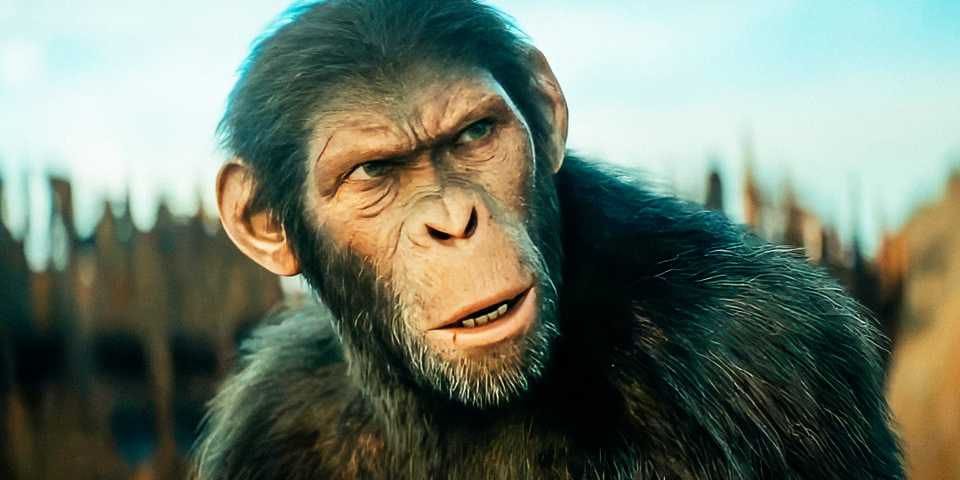What Planet of the Apes Gets Wrong About Apes, According to a Primatologist
The Planet of the Apes movie series has been a big hit since the 1960s. It’s based on a novel by Pierre Boulle and tells the story of a world where apes rule over humans. While the early films had a mix of science fiction and satire, the newer movies use modern technology and deeper storytelling to explore a world where apes become more intelligent than humans.
But not everything in the movies matches real-life science. One primatologist has pointed out a few major problems—especially when it comes to how one type of ape is shown.
Are Bonobos Really That Violent?
In an interview with Wired, primatologist Dr. Tara Stoinski shared her thoughts about the Planet of the Apes franchise. While she praised some parts of the films, she had serious issues with how the bonobos were portrayed.
One key character, Koba, is a genetically enhanced bonobo who becomes a major villain in Dawn of the Planet of the Apes. He’s angry, violent, and bent on revenge against humans.
However, Dr. Stoinski explained that real-life bonobos are nothing like Koba. In fact, they are considered one of the most peaceful great ape species. Bonobos usually solve problems through affection, not aggression. They often share food and avoid fighting. That’s a big contrast from how Koba acts in the films.
So, while Koba might be an exciting character, he doesn’t represent how bonobos behave in nature.
What Bonobos Are Really Like
Bonobos (Pan paniscus) are closely related to chimpanzees, but their personalities are very different. While chimps can be aggressive and competitive, bonobos are more social and gentle. They often use bonding behaviors to solve disputes.
In the wild, bonobos rarely fight over food or territory. Instead, they live in mostly peaceful groups, led by females. These facts make Koba’s portrayal even more unrealistic.
Still, it’s important to remember that Koba’s character was given a dark past. In the movie, humans experimented on him, which led to his deep hatred and violent actions. So even though his behavior doesn’t match the average bonobo, the story offers a reason for his rage.
Other Apes in the Movies Are Closer to Reality
While bonobos are misrepresented, the movies do a better job with other apes—especially chimpanzees and orangutans.
Caesar, the main hero of the newer films, is a chimpanzee. According to Dr. Stoinski, his behavior is actually quite close to how real chimps act. In chimp communities, a dominant male often leads the group. He protects others, keeps order, and fights off threats—just like Caesar does in the films.
Another character, Maurice the orangutan, is also shown in a mostly accurate way. He’s calm, wise, and intelligent. Dr. Stoinski mentioned that real orangutans are known for their smarts and gentle nature. Maurice’s peaceful personality fits well with what scientists know about his species.
But Isn’t It Just Science Fiction?
Yes, it is. And that’s important.
The Planet of the Apes movies aren’t trying to be perfect science documentaries. The apes in the films are genetically modified. A special drug increases their brain power and changes how they behave. That creative twist gives the writers freedom to imagine what apes could become.
Because of this fictional element, the movies don’t need to stick 100% to real animal behavior. That’s why Koba’s violent character, while scientifically wrong, still works in the story.
Plus, real animals—just like people—have unique personalities. It’s possible that even among peaceful bonobos, one might turn out differently, especially if they were raised in pain and fear, like Koba.
The Deeper Meaning of Koba vs. Caesar
Koba isn’t just a villain—he’s a symbol. He represents the darker side of what apes could become if they let anger and revenge take over. He’s a contrast to Caesar, who tries to lead with wisdom and compassion.
Their conflict shows two possible futures. One is built on trust and peace. The other is driven by hate and war.
So, while the science behind Koba may not be accurate, his role is powerful. He helps tell a deeper story about leadership, trauma, and choice.
Final Thoughts: A Mix of Science and Fiction
The modern Planet of the Apes films include: Movie Title Release Year Rotten Tomatoes Score Rise of the Planet of the Apes 2011 82% Dawn of the Planet of the Apes 2014 91% War for the Planet of the Apes 2017 94% Kingdom of the Planet of the Apes 2024 80%
These films blend action, emotion, and sci-fi in a way that captures audiences around the world. While not always true to real-life animal behavior, they still show a lot of respect for the intelligence and complexity of apes.
And thanks to experts like Dr. Tara Stoinski, viewers can better understand where the movies get it right—and where they don’t.





